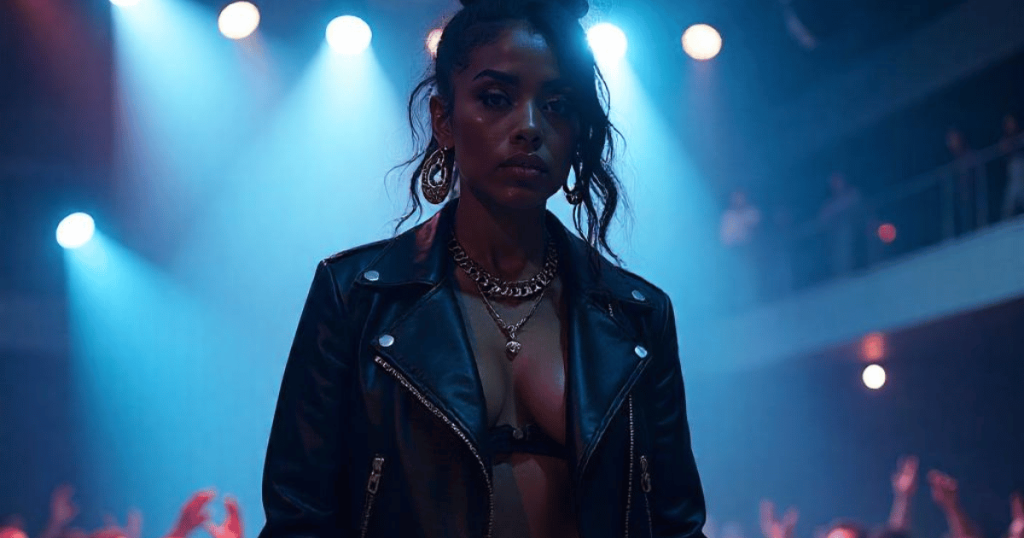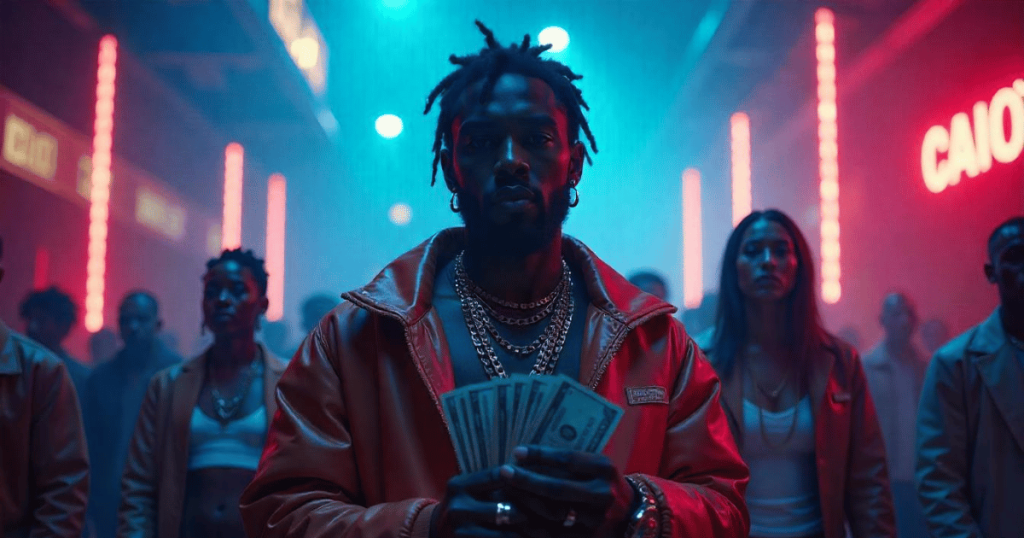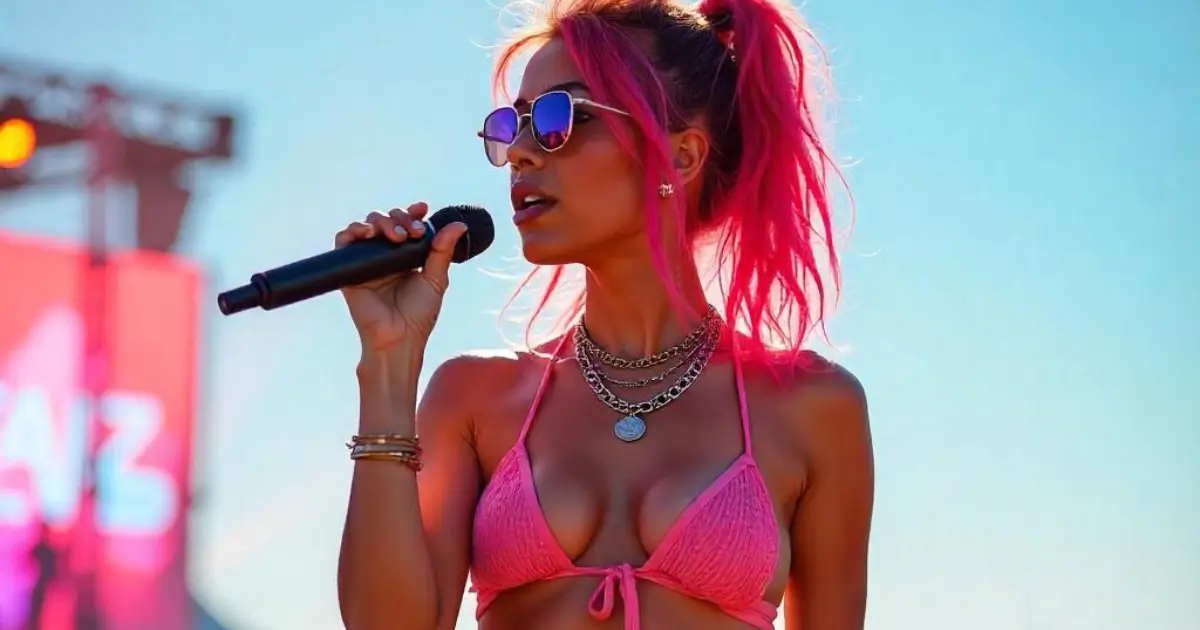Picture this: a sun-bleached afternoon in a back-alley studio where the clamor of the city meets the hum of digital servers. A young rapper, headphones clamped tight, fires off verses into a microphone that’s seen more battles than any street corner ever could. Meanwhile, somewhere in a glass tower downtown, a team of data scientists monitors real-time engagement metrics—clicks, streams, shares—each beat and bar feeding a voracious algorithm hungry for the next viral hit. Welcome to 2025, where the business side of hip-hop isn’t just a subplot; it’s the main act, rewriting the rules of an art form that’s always thrived on defiance, contradiction, and unapologetic rawness. For more insights into the pulse of modern hip‑hop and its evolving business landscape, visit Beats To Rap On.
The Collision of Beats and Bank Accounts
Imagine a world where every lyric is a line item, every hook a headline in a digital ledger. It’s a paradox that defies tradition: the raw, unfiltered energy of hip-hop, born from the grit of block parties and basement cyphers, now tangled up in a labyrinth of data points, sponsorship deals, and blockchain contracts. In 2025, rappers aren’t just spitting truth—they’re negotiating million-dollar deals over the same verses that once described life on the streets. This isn’t a sanitized, cookie-cutter music business; it’s a wild, unpredictable battleground where commerce meets creativity, where the soul of the art form is both exploited and exalted by the relentless march of technology.
The stakes are higher than ever. Here, authenticity isn’t just a badge of honor—it’s a bargaining chip. And if you think the past was complicated, wait until you see what’s happening now. As hip-hop morphs into a hyper-commercialized juggernaut, the art itself is being deconstructed and reassembled into revenue streams that would have sounded like science fiction only a decade ago.
The Evolution of Hip-Hop’s Revenue Streams
Back in the day, money in hip-hop meant a few hundred bucks earned on mixtape hustles or a modest advance from a scrappy indie label. Fast-forward to 2025 and the game has fundamentally changed. The old guard might reminisce about trading mixtapes on cassette or the raw adrenaline of a live show, but today’s artists are navigating a multifaceted empire where every digital interaction translates into cold, hard cash.
From Street Hustles to Digital Dollars
In the early days, hip-hop was as much about survival as it was about expression. Artists hustled with limited resources, relying on grassroots networks and word-of-mouth to spread their sound. Money was secondary to message. But as the genre grew into a cultural and commercial powerhouse, the avenues for monetization multiplied like the layers in a perfectly mixed track.

Record sales have long been the lifeblood of music revenue, but in 2025, the shift from physical media to streaming has transformed the revenue model into something almost unrecognizable. Streaming platforms are no longer just conduits for music—they’re sophisticated, data-driven ecosystems that reward not just the quality of a track, but its viral potential and for more information check out The New York Times – “How Streaming Is Changing the Music Business” Every play, skip, or share is meticulously tracked, transformed into micro-royalties that trickle through convoluted contracts. The value of a track is now as much about its algorithmic performance as it is about its lyrical genius.
And then there’s the surge of merchandise and lifestyle branding. Today’s rappers are no longer just voices on a track; they’re moguls building their own brands. Think of the evolution from run-of-the-mill t-shirts to limited-edition sneaker drops, custom fashion lines, and even high-end collaborations with luxury brands. Hip-hop has become a full-spectrum business, where every outfit, every accessory, and every Instagram post is a chance to monetize cultural cachet.
The Digital Revolution and the Rise of New Models
Technology has been the catalyst for this evolution. The internet, social media, and mobile devices shattered the old gatekeeping mechanisms, enabling artists to connect directly with fans. But with that power comes the price of constant visibility. Every tweet, every post, every streamed beat is a data point in the grand calculus of digital success. In this realm, the line between art and advertisement blurs into a murky haze. If you’re experimenting with beats or need that perfect rhythm for your next track, try our handy BPM & Key Finder.
Consider live performances. The days of exclusively physical concerts are giving way to a hybrid reality… Curious about what’s hot right now? See which tracks are dominating the charts on our monthly leaderboard. In a pandemic-hardened world, where physical proximity has become both a liability and a luxury, these digital performances aren’t just a stopgap—they’re a new revenue frontier. Fans no longer just attend a concert; they invest in an experience that’s meticulously designed to merge the visceral with the virtual.
Beyond performances, the blockchain has emerged as a disruptive force. Rappers are now minting their work as NFTs—unique, digital assets that guarantee ownership in a space where replication is a given. NFTs offer a radical new model for monetizing art: an artist can release a limited number of digital copies of a track, a piece of art, or even an entire album, each one a verifiable token of authenticity. It’s a high-risk, high-reward gamble that’s shaking up how intellectual property is valued and traded.
The Convergence of Commerce and Culture
Yet, amid all these innovations, a central question looms: as the money flows in from every conceivable digital source, what happens to the human element at the heart of hip-hop? The genre has always been a mirror of its community—a raw, unfiltered reflection of struggle, resilience, and rebellion. Now, it’s caught in a tug-of-war between maintaining that authenticity and embracing the lucrative, often dehumanizing, trappings of modern capitalism.

The evolution of hip-hop’s revenue streams isn’t just about technological progress—it’s a narrative of cultural transformation. It’s a story of pioneers who carved out their space on vinyl and mixtapes, and of the new generation that wields smartphones and algorithms as their weapons of mass expression. It’s a dance between the old and the new, where every success is tempered by the risk of losing the gritty essence that once defined the genre.
Section 2: The Good, The Bad & The Ugly of Modern Hip-Hop Monetization
The promise of digital democratization is intoxicating—suddenly, every aspiring artist has a stage, a platform, a chance at stardom. Yet, the same tools that amplify voices can also distort them, turning genuine talent into fodder for the algorithmic beast.
The Allure of Instant Accessibility
Platforms like TikTok and SoundCloud have been revolutionary, catapulting unknown artists into overnight sensations. A catchy hook, a cleverly crafted beat, and suddenly millions of streams—this is the new lottery, and when the discussion turns to the raw energy of trap music, you can always find a selection of intense, high-impact beats at Trap Beats. The accessibility is unparalleled: you don’t need to be born with a silver spoon or the backing of a major label; you just need the right sound and a bit of digital luck.
But here’s the catch: while these platforms break down traditional barriers, they also foster a culture of disposability. Viral success is fleeting, and the relentless churn of content means that today’s hit can become tomorrow’s forgotten meme. The pressure to constantly produce, to generate the next big thing, is relentless. Artists often find themselves trapped in a cycle where the pursuit of virality eclipses the pursuit of artistic integrity.
The Perils of Monetizing Authenticity
Money talks, and in a world where every beat is engineered for maximum engagement, the risk is that the art gets sanitized for mass appeal. Sponsorships and brand deals have become a double-edged sword. On the one hand, they provide the financial muscle that allows artists to invest in their craft, experiment with new sounds, and expand their creative horizons. On the other, they often come with strings attached—a polished image, a sanitized persona, a detachment from the raw, unvarnished narrative that once set hip-hop apart.
This isn’t just an aesthetic shift—it’s a fundamental transformation in the relationship between artist and audience. When your every move is monetized, when every public appearance is a carefully orchestrated performance designed to maximize brand value, where does the spontaneity go? The once-rebellious spirit of hip-hop, rooted in a visceral, in-the-moment defiance, risks being drowned out by corporate agendas and market research.
Data, Algorithms, and the Death of the Unscripted
Perhaps the most insidious evolution is the rise of data analytics in the creative process. In the past, a rapper’s success was measured in gritty performances, raw emotion, and the unfiltered expression of lived experience. Today, it’s all about numbers. Every beat is optimized for retention, every lyric engineered for shareability. The algorithm becomes the unseen producer, guiding creative decisions with its cold, unyielding logic. For artists looking to experiment with off-the-cuff flows and improv, our collection of freestyle-rap beats can offer some inspiration.
This data-driven approach has its merits—it can identify trends, optimize fan engagement, and even predict what will resonate with audiences. But it also risks reducing art to a series of metrics. The unpredictability, the raw chaos that defines a true hit, gets sacrificed at the altar of market research. When every verse is a calculation, every hook a formula, the music risks becoming a mechanical echo of what’s statistically likely to succeed.
The consequence? A potential loss of soul. Authenticity is measured not in dollars and data points, but in the lived, messy reality of the artist’s experience. And when that reality is filtered through a digital prism, the raw edges blur, and something essential can be lost.
Sponsorships and the Corporate Embrace
Then there’s the issue of sponsorships and brand endorsements—a modern echo of the old-school hustle, but on a scale that few could have imagined. The allure of big money is undeniable. A single deal with a global brand can transform an artist’s career overnight, opening doors to further opportunities and cementing their place in the upper echelons of the industry.
But with that cash flow comes compromise. Brands want clean, marketable images, and in return, they often demand that the artist’s message be softened, their edge dulled. There’s a constant negotiation between maintaining street credibility and appealing to a corporate audience. The very act of monetizing your image can lead to accusations of selling out, of diluting the very essence of what made hip-hop a force for cultural change. It’s a high-stakes game where every dollar earned is both a triumph and a potential betrayal of the artist’s roots.
The Underground Versus Mainstream Divide
In this sprawling new ecosystem, there exists a palpable tension between the underground and the mainstream. The pioneers—the ones who built the culture from the ground up—often view these new revenue models with a mix of skepticism and dismay. To them, the commercialization of hip-hop isn’t a natural evolution; it’s a dilution of the very spirit that gave birth to the genre. They see the commodification of their art as a betrayal—a surrender to a system that values profit over passion.
Conversely, the new generation of artists is pragmatic. They understand that to survive in today’s landscape, you have to play the game. And sometimes that means embracing the business side of things, leveraging every tool at your disposal—even if it means walking a tightrope between authenticity and marketability. It’s a divide that’s as ideological as it is practical, a reflection of the broader cultural shifts that have redefined what it means to be an artist in the digital age.
Section 3: Authenticity in the Era of Digital Commerce
Let’s cut through the bullshit: hip-hop has always been about authenticity. It’s the heartbeat of a culture that emerged from the struggle, the raw narratives of urban life that couldn’t be packaged or sold. But in 2025, authenticity is up for debate. It’s caught in a constant clash with the imperatives of digital commerce—a battleground where every lyric is a potential revenue stream and every performance a calculated risk.
The Price of Being Real
Authenticity isn’t free. It’s a resource that’s constantly under siege by the demands of the marketplace. The unvarnished truth, the gritty details of life on the streets, can be too raw for mainstream consumption. And so, artists find themselves in a constant tug-of-war, negotiating between the uncompromising reality of their lived experiences and the sanitized versions demanded by sponsors, streaming platforms, and corporate interests.
Consider the impact of autotune and digital editing—a revolution in sound that allowed for unprecedented musical experimentation. What started as a tool for creative expression quickly became a symbol of a broader shift towards perfectionism in production. To get a taste of the authentic sound of the streets, check out our extensive library of Hip Hop Beats. Today, even the most impassioned verses are subject to endless tweaks, data-driven adjustments, and algorithmic fine-tuning. The result? A sound that’s polished to a fault, where every imperfection is scrubbed away in favor of a meticulously engineered hit. And yet, in that polish, something intrinsically human is lost—the raw, unfiltered imperfections that once defined the authenticity of hip-hop.
When Art Meets Algorithm
The influence of data analytics on the creative process cannot be overstated. The algorithm now dictates not only which songs get played, but often what songs get made. Artists are armed with insights into what resonates, what will rack up streams, and what trends are on the horizon. This knowledge can be a powerful tool, guiding creative decisions with a precision that was once the stuff of intuition and chance. But it also poses a threat: the more art is tailored to the whims of an algorithm, the more it risks losing the unpredictability that fuels genuine creativity.
It’s a tension that has no easy answers. Can an artist truly remain authentic when every move is calculated for maximum market impact? Or does the very act of monetizing your creativity inevitably sanitize it, stripping away the layers of complexity that once made it revolutionary? The debate rages on in studios and boardrooms alike—a relentless push and pull between the soul of the artist and the cold calculus of commerce.
Bridging the Old and the New
Yet, for all its challenges, this era of digital commerce also offers unprecedented opportunities. Artists are not confined by the old paradigms of gatekeepers and industry moguls. The democratization of music distribution means that a voice from a forgotten neighborhood can now reach millions across the globe with a few clicks. And while the pressure to conform is intense, there’s also room for genuine innovation.
Some artists are finding ways to merge the raw storytelling of the past with the cutting-edge tools of today. They’re using technology not as a crutch, but as a means to amplify their message, to experiment with new sounds, and to tell stories that are as relevant as they are revolutionary. It’s a delicate balance—a fusion of analog grit and digital savvy, of heart and hardware—that defines the best of what modern hip-hop can offer.
Section 4: The Next Generation’s Playground
Step aside, old guard—the new generation is here, and they’re rewriting the playbook with a radical, tech-infused swagger that leaves traditional models in the dust. In 2025, emerging voices in hip-hop aren’t just adapting to change; they’re accelerating it. They harness artificial intelligence, blockchain, and hyper-connected social media to create ecosystems that are as innovative as they are unpredictable.
The Tech-Infused Creative Process
For the new wave of artists, technology is less an external force and more an intrinsic part of the creative process. AI isn’t the enemy—it’s the collaborator. Imagine a rapper who sits in a studio not with a co-producer, but with an AI program that crunches data, suggests beats, and even proposes lyrical themes. The result is a hybrid creative process that fuses human intuition with machine precision. It’s a heady mix of inspiration and calculation, of spontaneity and structure.
And while some critics decry this as a dilution of the human touch, the truth is that these tools can also unlock new realms of creativity. When harnessed correctly, AI can help an artist break through creative blocks, experiment with unconventional sounds, and even tap into cultural trends before they fully emerge. It’s a high-stakes gamble—a bet that the fusion of technology and artistry can produce something that’s both groundbreaking and true to the raw, unfiltered spirit of hip-hop.
Blockchain, NFTs, and the Future of Ownership
The blockchain revolution isn’t just about cryptocurrencies; it’s about reclaiming control over intellectual property in an era where digital reproduction is limitless. NFTs have emerged as a powerful tool for artists, enabling them to monetize their work in a way that ensures authenticity and scarcity. Imagine dropping a limited-edition track, each copy a unique digital token verified on the blockchain. It’s a game-changer—a way to capture value in a digital world where nothing is truly rare.

For many young rappers, this isn’t just a novelty; it’s a practical solution to an industry that often leaves creators at the mercy of middlemen and record labels. By bypassing traditional distribution channels, artists can claim a larger slice of the revenue pie, retaining creative control while also engaging with a tech-savvy audience that values innovation as much as authenticity.
The New Metrics of Success
Social media isn’t just about likes and shares—it’s the pulse of the modern hip-hop ecosystem. The new generation measures success not only in record sales or streaming counts, but in the viral resonance of a single tweet, the engagement on a live stream, the impact of a meme. It’s a world where an artist’s influence is quantified in real-time, where every digital interaction is a potential revenue stream.
And yet, in this hyper-connected landscape, the pressure to perform can be overwhelming. Every post, every video, every off-the-cuff remark is a data point that feeds into a larger narrative. There’s little room for downtime, for the kind of introspection that used to fuel some of the genre’s greatest works. The hustle is relentless, the expectations sky-high—a digital arms race where the prize is not just fame, but survival in a market that’s as unforgiving as it is dynamic.
Reclaiming the Narrative
But here’s the kicker: amid the digital chaos, there’s a fierce undercurrent of resistance. The next generation of hip-hop isn’t content to simply follow the rules of the game—they’re out to rewrite them. They’re reclaiming the narrative, challenging the conventions of what it means to be an artist in a hyper-commercialized world. They’re blending the streetwise wisdom of old-school legends with the disruptive energy of modern technology, forging a path that’s uniquely their own.
For these innovators, authenticity isn’t a casualty of commercialization—it’s the spark that fuels their revolution. They’re acutely aware of the tensions between art and commerce, between tradition and innovation, and they’re navigating that terrain with a blend of bold experimentation and reverence for the past. It’s a rebellious stance, a refusal to let the corporate machinery define the limits of their creativity.
Hip-Hop’s Endless Tug-of-War: The Future is Unwritten
At its core, hip-hop has always been a tug-of-war—a relentless push and pull between the raw, unfiltered impulse of expression and the calculated demands of survival. In 2025, that struggle is more pronounced than ever. On one side, you have the forces of commercialization, data analytics, and brand partnerships—elements that promise financial security and widespread reach. On the other, you have the unyielding spirit of the streets, the uncompromising need to tell stories that matter, to capture the chaos of lived experience in every verse.
The Cost of Compromise
This tension isn’t just academic—it’s real, palpable, and often painful. Every decision to monetize a creative endeavor is a negotiation, a potential compromise of the very essence of what makes hip-hop so electrifying. The allure of a lucrative sponsorship can be as seductive as it is corrosive, slowly eroding the rough edges that once defined a generation of artists. And yet, for many, the alternative—clinging to an idealized notion of purity in an increasingly commodified landscape—is simply not feasible.
The cost of staying true to your roots can be steep. The pioneers of the genre, those who built hip-hop from scratch, understand this better than anyone. They’ve witnessed the slow, insidious transformation of their art into a product, a series of data points to be exploited by an industry more concerned with profit margins than poetic truth. And yet, even as they lament the loss of the raw, unfiltered sound of the past, they can’t help but marvel at the resilience and ingenuity of the culture. Hip-hop, after all, has always thrived on contradiction, on the interplay between innovation and tradition.
Leaving Threads Unfinished
In many ways, the future of hip-hop is an unfinished tapestry—a collage of contradictions, tensions, and unspoken questions. What happens when every transaction, every deal, every digital footprint is measured in dollars and data? Can the unbridled creative spirit that once defined the genre survive in a world where even the most passionate expression is subject to market forces?
There are no easy answers here. The business side of hip-hop is a dynamic, ever-evolving beast, a creature that refuses to be neatly categorized or fully understood. It’s a living, breathing entity that adapts, mutates, and reinvents itself with every new technological breakthrough, every cultural shift, every disruptive moment that defies the status quo.
Conclusion: The Endless Revolution of Hip-Hop
So, where does that leave us? The business side of hip-hop in 2025 is not a neatly packaged story with a tidy conclusion—it’s a sprawling, unpredictable revolution, a collision of beats and bank accounts, of raw authenticity and slick commercial acumen. It’s a realm where every dollar earned is both a victory and a potential betrayal of the art’s core values, where every deal struck is a reminder that even the most soulful expression is subject to the cold calculus of modern capitalism.
This isn’t a call for a return to the past, nor is it a rallying cry for blind innovation. It’s an invitation to recognize the inherent tensions that define the landscape of modern hip-hop—to acknowledge that the very forces that propel the art forward can also threaten to undermine its essence. It’s a challenge to both the industry and its audience: to demand more than just catchy hooks and viral moments, to insist on depth, honesty, and a relentless commitment to the truth of lived experience.
Hip-hop has always been a force of resistance, a medium that defies easy categorization and refuses to be confined by any single narrative. From the streets to the boardrooms, from mixtape hustles to blockchain breakthroughs, it remains a battleground—a place where the struggle for authenticity is as fierce as the drive for success. And as long as that struggle continues, as long as artists keep challenging the rules and redefining what it means to be real in a commodified world, hip-hop will continue to evolve, to rebel, and to resonate with the unyielding spirit of those who dare to dream.

In the end, the business of hip-hop isn’t merely about making money—it’s about making history. It’s about harnessing the power of technology, the magnetism of raw talent, and the unbreakable will of a culture that has always found a way to speak its truth, no matter the cost. Whether it’s through streaming platforms, digital merchandising, virtual concerts, or NFT drops, the new generation of rappers is rewriting the rules, challenging the status quo, and proving that art can flourish even in the most commercialized of landscapes.
As you step back and let the beats of this revolution reverberate through your mind, ask yourself: what does it mean to be authentic in an age defined by digital transactions and endless monetization? Can the soul of hip-hop endure when every note is calculated, every lyric premeditated? Or is the raw, unpredictable pulse of the streets destined to be forever transformed by the relentless march of progress?
The answers are as elusive as the perfect beat, as multifaceted as the cultures that birthed this unstoppable force. And perhaps that’s the beauty of it all: hip-hop’s endless tug-of-war isn’t a sign of decay, but rather a testament to its enduring power—a constant, chaotic reminder that the struggle for authenticity is the very engine of creativity.
So here’s to the hustlers, the innovators, the dreamers, and the rebels. Here’s to every artist who, in the face of overwhelming odds and relentless commercialization, dares to spit their truth and challenge the confines of a system that would have them play it safe. Hip-hop in 2025 is raw, it’s relentless, and it’s unapologetically alive—a wild, unpredictable symphony of commerce, creativity, and the indomitable human spirit.
Keep your eyes open, your ears tuned, and your mind ready for the unexpected. Because in this era of hyper-innovation and relentless monetization, the game is still being written—one verse, one beat, one digital revolution at a time. And as long as there are voices brave enough to challenge the system, hip-hop will remain a force to be reckoned with, a cultural juggernaut that refuses to be silenced by the trappings of modern commerce.
In the end, the business side of hip-hop is more than a story about money—it’s a saga about power, identity, and the eternal struggle to keep art unbridled in a world that seeks to tame it. It’s a call to look beyond the glittering veneer of sponsorships and data points, to see the raw, unfiltered passion that has driven this movement from its inception to its explosive present. And it’s a reminder that while the rules may be rewritten, the spirit of hip-hop—wild, unpredictable, and irrepressibly real—will never be tamed.
The revolution is ongoing, and the future remains unwritten. The relentless pulse of hip-hop, intertwined with the cold logic of commerce, will continue to defy expectations, disrupt conventions, and inspire countless voices to rise above the noise. This is not just the business of hip-hop—it’s a living, breathing chronicle of human resilience and creativity in an era defined by both limitless possibility and relentless profit.
So as you ride the wave of this digital revolution, remember that every beat, every lyric, every hustle is a testament to a culture that refuses to be boxed in by boundaries or bent by the whims of market forces. Hip-hop in 2025 is a daring blend of past, present, and future—a dynamic, untamed narrative that challenges us to rethink what it means to create, to express, and to truly live.
And maybe that’s the ultimate lesson: that in a world where even art is measured in metrics, the most revolutionary act is to keep it raw, keep it real, and above all, keep it relentlessly human.
This is the business side of hip-hop in 2025—a sprawling, chaotic symphony where every note is a negotiation between authenticity and advancement, between the street’s unfiltered voice and the boardroom’s calculated strategy. It’s a testament to the fact that while the rules may change, the heart of the culture beats on, wild and untamed.
As the new generation of artists continues to innovate, challenge, and transform the landscape, one thing is certain: hip-hop will never be confined by conventional wisdom or corporate mandates. It will always be a place where the struggle for truth and the pursuit of profit coexist in a beautiful, chaotic dance—a dance that, against all odds, continues to inspire, provoke, and ignite revolutions of the mind and spirit.
Welcome to the future of hip-hop—a realm where every dollar, every deal, and every digital interaction is both a promise and a paradox, a challenge to the status quo and a call to arms for anyone who dares to dream beyond the boundaries of the ordinary. In this era of relentless change, the business of hip-hop is not just about making money—it’s about making history. And as long as there are voices brave enough to push against the tide, the beat will go on, wild, uncompromising, and forever free.
There you have it—a sprawling, unfiltered look at how the business side of hip-hop in 2025 is reshaping not just the music, but the very fabric of culture. It’s messy, it’s unpredictable, and it’s a reminder that even in a world dominated by data and dollars, the spirit of the streets still burns bright, challenging every norm and inspiring every revolution.
